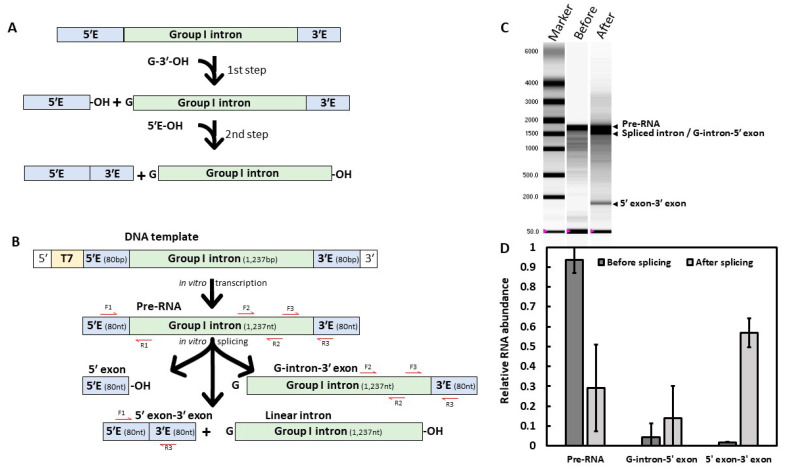Figure 1.
In vitro self-splicing of the Fusarium oxysporum cob group I intron. (A) Group I intron splicing mechanism. The 2-steps reaction starts with the addition of a guanosine (G-3′-OH) cofactor to the mix. (B) Experimental design. The Fusarium intron sequence was PCR amplified with 80 bp of border exons and a T7 promoter, then in vitro transcribed prior to the self-splicing reaction. Red arrows correspond to primers used for RT-qPCR. (C) RNA migration of reaction products, before (1) or after (2) the self-splicing reaction. Arrows represent the different splicing products obtained. Because of their similar length, spliced introns could not be distinguished from the intermediate product carrying the 3′ exon. RNA marker (M) sizes in nucleotides are indicated. Representative result of three independent experiments. (D) Quantitative Reverse Transcription PCR (RT-qPCR) of reaction products before and after splicing. Representative result of three independent experiments based on three technical replicates.

